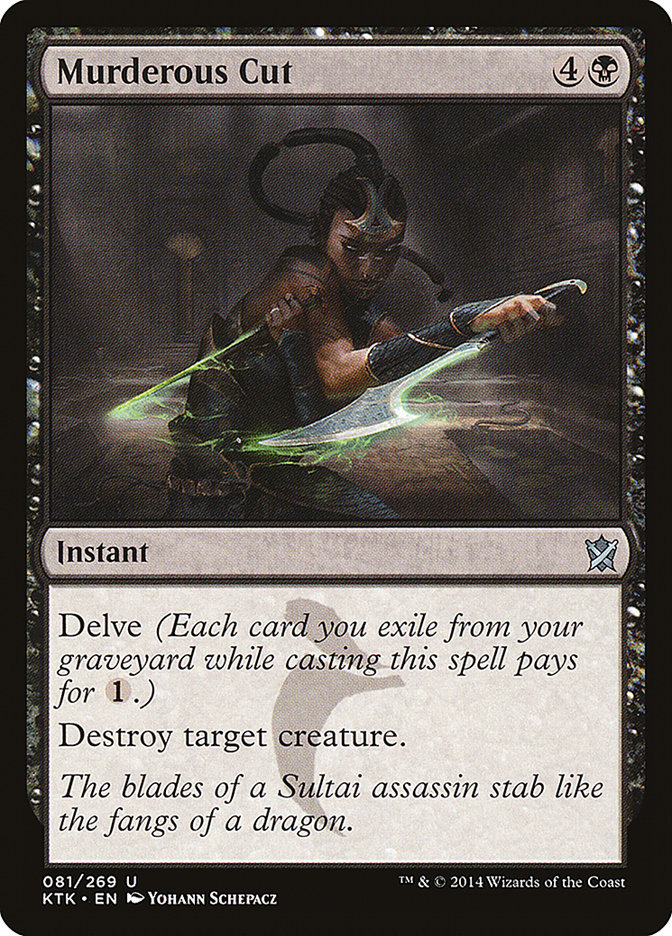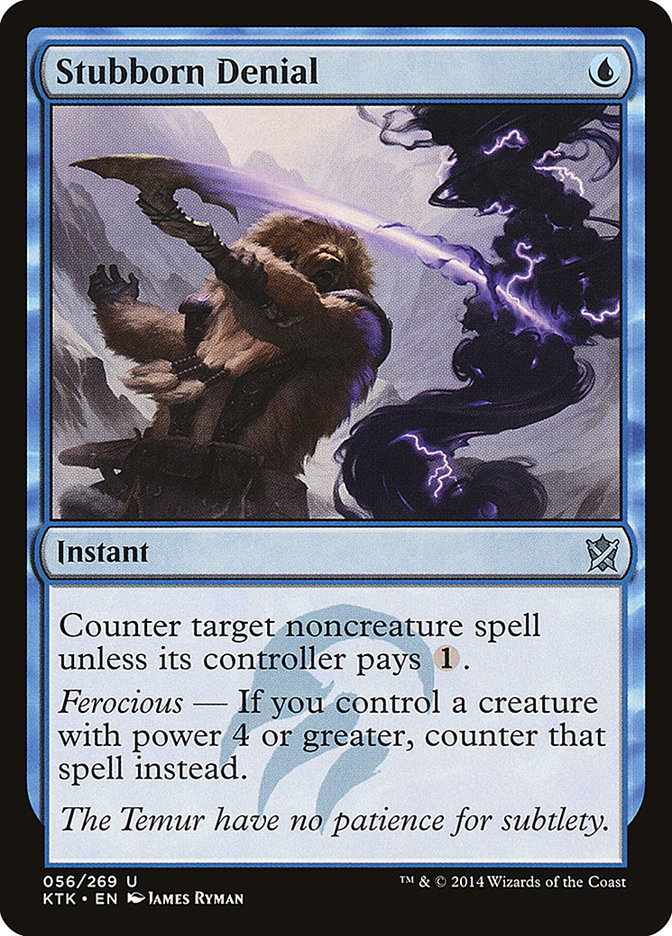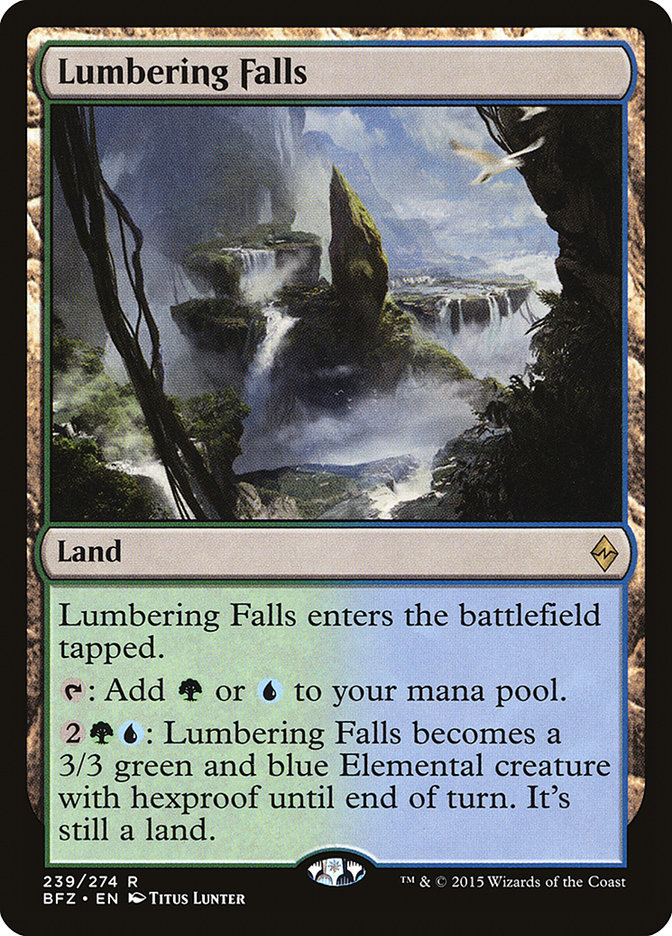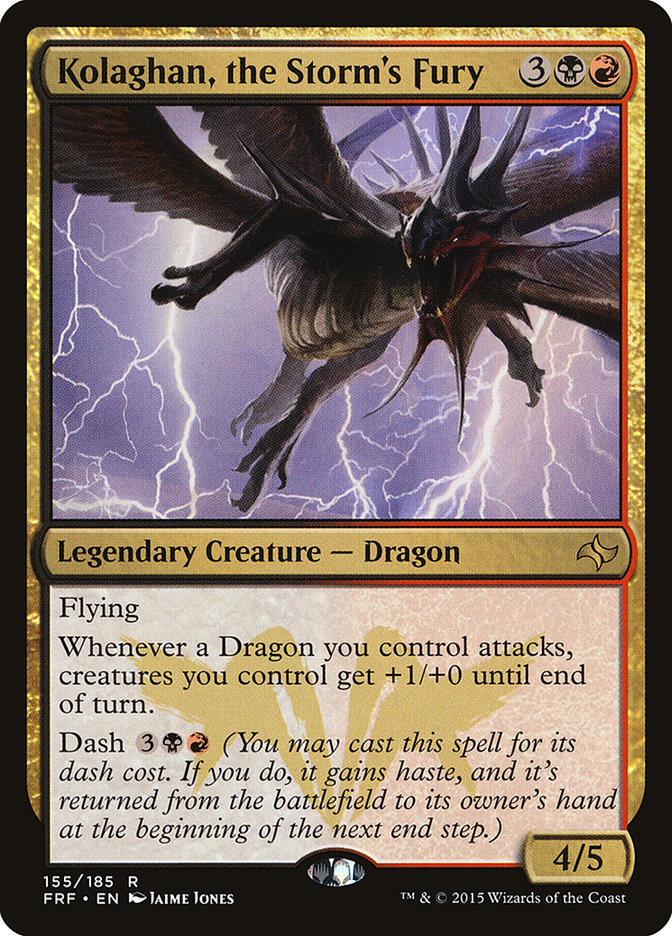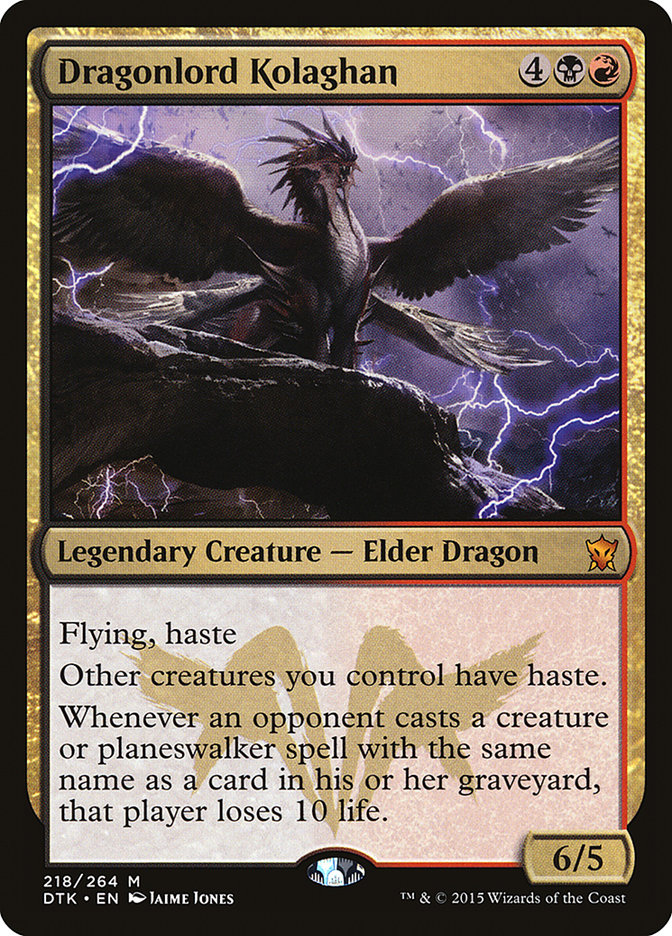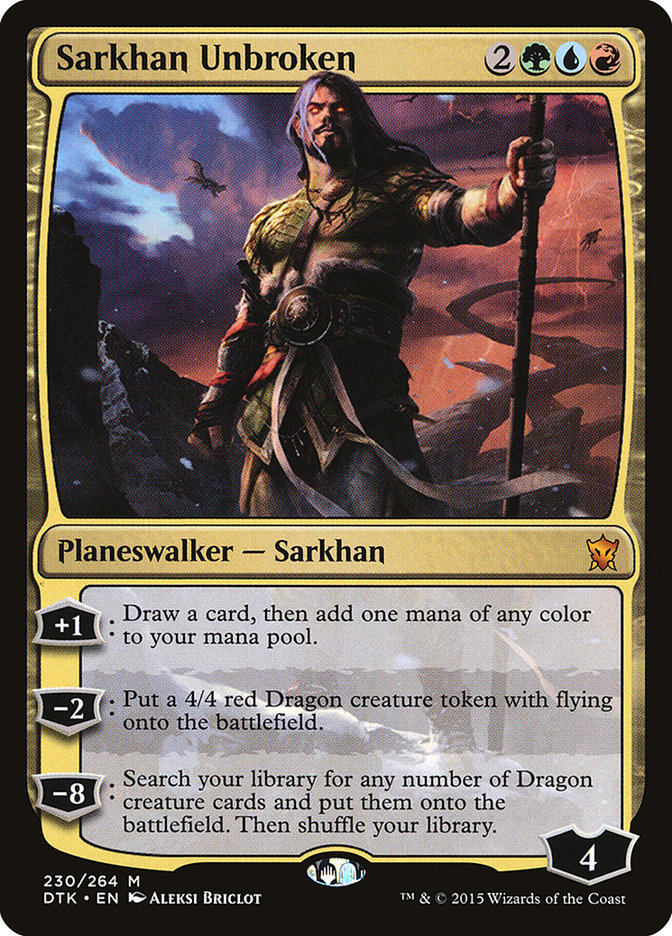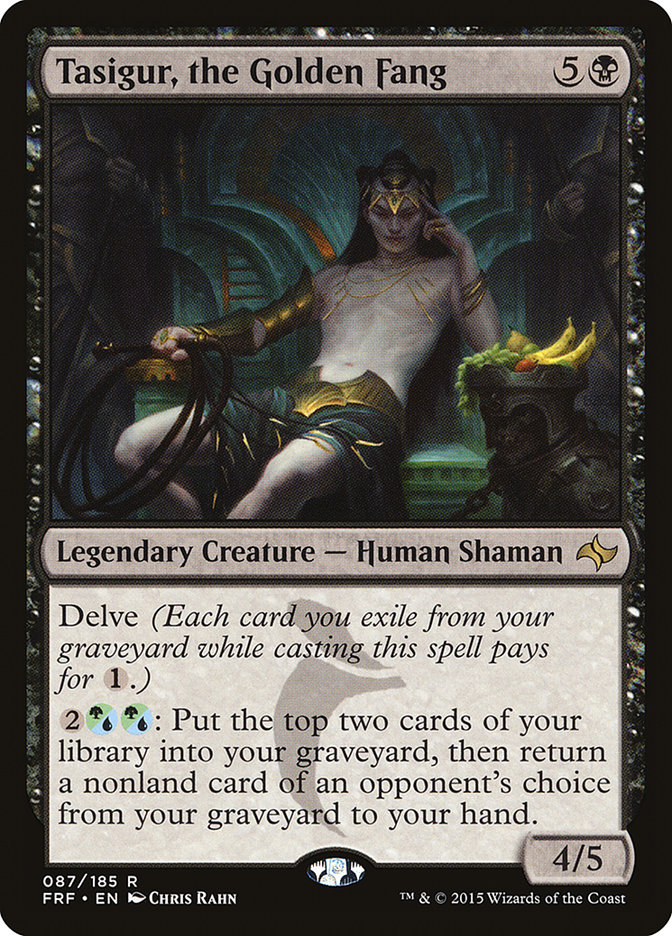Sometimes, great epiphanies in deckbuilding come at just the right time. Ben Rubin decided to try Punishing Fire and Grove of the Burnwillows in my
Baneslayer Zoo deck just days before Pro Tour Austin. Josh Utter-Leyton suggested moving my Stoneforge Mystic plus Sword of Feast and Famine sideboard plan
into the maindeck of Caw-Go shortly after we landed in Paris to practice for the Pro Tour. Sam Black pieced together his Bant Token deck that performed so
well at Pro Tour Battle for Zendikar only the day before the event – just in the nick of time.
But some revelations come long after the fact, and rather than serving to earn accolades and glory, only lead one to wonder how you could have missed
something so obvious all along.
I spent nearly all of my time preparing for #PTBFZ working on various base-Temur midrange decks. In a world full of G/W Megamorph, Jeskai, and Atarka Red,
I felt like being able to play Savage Knuckleblade alongside Stubborn Denial seemed like a great place to be, especially since you had access to Radiant
Flames with a bunch of creatures that could survive it. I went through at least a dozen different iterations of the deck, including straight Temur,
splashing white, and splashing black, before I finally gave up.
My biggest problem with the deck was that it was just too slow. In the games where I didn’t draw Rattleclaw Mystic or it died, I just always felt like I
was playing from behind. I tried a bunch of different two-drops, including Beastcaller Savant, Heir of the Wilds, Jace, and even Skyrider Elf, but
ultimately none of them felt like they did enough.
It was only recently that I realized that I was an idiot, and the answer was right in front of me all along.
And I mean literally right in front of me. While I was fumbling around with my clunky Temur Dragon deck, a bunch of the other players on the team were
testing Atarka Red with landfall creatures. Most of them were playing Makindi Sliderunner, but some were experimenting with Snapping Gnarlid to help weaken
Surge of Righteousness as a sideboard card.
It’s entirely possible that I complained out loud about there being no good two-drops for my deck while being attacked by a Snapping Gnarlid. I
certainly hope not, because that would be really embarrassing, and I’m already embarrassed enough already.
Snapping Gnarlid does everything my Temur deck wants. It’s an early creature that can apply a lot of pressure, attacking past most other creatures of its
cost thanks to landfall triggers. It can survive Radiant Flames thanks to those same triggers, much like Seeker of the Way in Mardu, but Sir Gnarls Barkley
can even get big enough to live through a full strength Flames as a 4/4 with a fetchland.
It also just so happens that 4/4 is the perfect size to synergize with ferocious cards, as well. The ability to turn on a cheap Crater’s Claws early in the
game can generate huge tempo swings, as well as help finish an opponent off. It can also enable Stubborn Denial, though that’s a bit harder on your
opponent’s turn since it requires two fetchlands on the table alongside the Gnarlid – though it is possible, and certainly realistic if you’re looking to
protect your own spells on your own turn against things like Ojutai’s Command.
Sadly, there isn’t another Standard Grand Prix in North America until January, and the Open Series doesn’t make it out to the west coast nearly as often as
I’d like. But if I had a Standard tournament coming up, this is what I’d be looking to play. And Snapping Gnarlid makes it all possible.
Creatures (20)
Planeswalkers (2)
Lands (26)
Spells (12)

One of the weaknesses that Temur decks have often struggled with is the difficulty in removing opposing large creatures. While much of the time you’d have
the biggest monster on the battlefield, sometimes you found yourself facing down the business end of a Siege Rhino with just inefficient burn spells to
remove it. The introduction of Roast certainly helped, but it entered the format at the same time Thunderbreak Regent made big flying threats much more
common. Splashing black helps Temur deal with big threats, grounded and in the air alike, that would otherwise prove quite troublesome.
If I learned anything from playing Mardu in the Pro Tour – besides Don’t play Mardu in the Pro Tour – it was the power of Murderous Cut. Despite
having a dearth of fetchlands to enable delve, Murderous Cut was perhaps the best card in my deck and was responsible for several of my wins almost
singlehandedly. That’s why when I revisited Temur, I decided to join the dark side.
The power of Murderous Cut lies in the fact that it allows you to advance your battlefield in the same turn that you play a substantial threat. Thanks to a
manabase featuring thirteen fetchlands, you can very often cast Cut for just one mana, which can generate a huge tempo swing.
The same is true for Stubborn Denial. If your opponent spends a significant portion of their turn trying to play a spell, countering it for just one mana
can be absolutely backbreaking. This is particularly true when you’re able to protect a battlefield-dominating creature like Woodland Wanderer, since it
doesn’t take many six-point hits to finish someone off.
At its heart, this is certainly an aggressive deck, looking to leverage the tempo advantages gained from Stubborn Denial and Murderous Cut to end the game.
You don’t have any real card advantage tools; instead you’re relying on powerful creatures, disruption, and burn to win the game before battles of
attrition set in. Thankfully, people are doing a lot of damage to themselves these days with fetchlands to make your job easier, and you have a lot of
tools to close out games. The damage from Snapping Gnarlid, Draconic Roar, and Thunderbreak Regent triggers can add up quickly, and then a sudden hasty
Savage Knuckleblade; Sarkhan, the Dragonspeaker; or Crater’s Claws to the face mops up the rest.
It is because of this reliance on aggression that my manabase is biased toward Frontier Bivouac rather than Lumbering Falls. This deck is very colored mana
intensive and can’t afford to miss its plays early in the game for lack of red mana. Not only does Frontier Bivouac help in games when you don’t otherwise
draw another red source but it also lets you more readily fetch basic lands rather than having to find Battle lands early on that might force you to play
off-curve.
Lumbering Falls is a powerful card in some games that go long, but that’s exactly what this deck is trying to avoid. Right now I have one in the deck as a
potential lategame mana sink, but in my experience so far, that’s rarely been something I’m looking to do. On the contrary, when I was playing more
Lumbering Falls, I frequently found myself struggling with mana issues, so making the swap felt like the obvious choice.
With four colors, there are obviously a lot of options for the sideboard, and this is intended more as a collection of ideas than a finished product.
Duress, Dispel, and the fourth Stubborn Denial are obviously great options against control and decks like Jeskai Black or Eldrazi Ramp, while Wild Slash
and Radiant Flames offer insurance against the opposite end of the spectrum in Atarka Red and the like. I like the idea of Dragonlord Silumgar against
almost any deck with Gideon, since stealing him to ultimate is so powerful, as well as against other midrange creature and ramp decks. He’s especially
strong if you can protect him with Stubborn Denial, since decks rarely have many ways to get him off the battlefield.
The strangest card in the sideboard is probably Icy Blast, but it’s one that seems excellent to me against G/W Megamorph. Games with G/W Megamorph often
devolve into massive battlefield stalls, in which neither player is really in a position to attack, while eventually the G/W Megamorph player is able to
generate multiple Gideon emblems or Wingmate Rocs or just grind things out with a Den Protector loop. Icy Blast can allow you to end the game through
almost any battlefield configuration, no matter how many Deathmist Raptors might be standing in the way of your Woodland Wanderer army. Unlike something
like Radiant Flames or Crater’s Claws, it can’t be stopped by Dromoka’s Command, and if you have ferocious – which you certainly will in any game like this
– you can even take two attacks to close things out, since your opponents creatures will all stay tapped.
Some other cards I’ve considered:
I can see the appeal of either one as a big hasty finisher, but this deck wants its big threats cheap to play alongside Stubborn Denial. I think the more
reasonable of the two is the Storm’s Fury, but I think Sarkhan does much the same job, and usually better in most matchups since he can double as removal
in a pinch.
I prefer Sarhkan, the Dragonspeaker to his three-color self from a different timeline. I actually think the Temur Sarkhan is a very powerful card, but it
doesn’t line up as well with this deck’s aggressive bend, while the hasty threat of the mono-color version works quite well.
Tasigur is very powerful, and even turns on Stubborn Denial and Crater’s Claws as early as the third turn with a grip full of fetchlands. But he conflicts
with Murderous Cut when it comes to delve costs, and I think the black removal spell is more important for what this deck is trying to do. I could
certainly see playing some number of Tasigur in the sideboard for control matchups where you want to remove your Murderous Cuts – there is one in there
right now – but I don’t think he belongs in the maindeck.
I’m certain there are improvements to be made, but I’ve only really just started to explore this deck. Thankfully, I have a lot of time to perfect it
before the next time I play in a big Standard event, though with how much fun I’ve been having playing some of my favorite cards in the format and actually
winning with them, I wish that chance would come sooner.
Who would have thought Snapping Gnarlid would have made it all possible?



